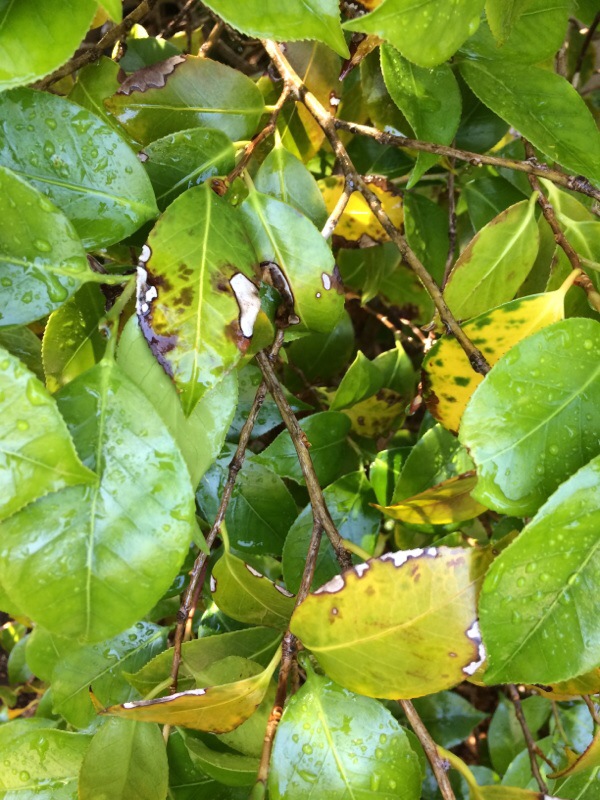
Camellia Plant Diseases Pictures / Check spelling or type a new query.
Root Rot Viruses There are a few physiological disorders that mimic diseases, and these are worth a quick note as well before we begin. Scab isn't technically a disease, it's a physiological condition. But it looks like a disease has set in, with corky, irregular brown spots that appear on the undersides of leaves.
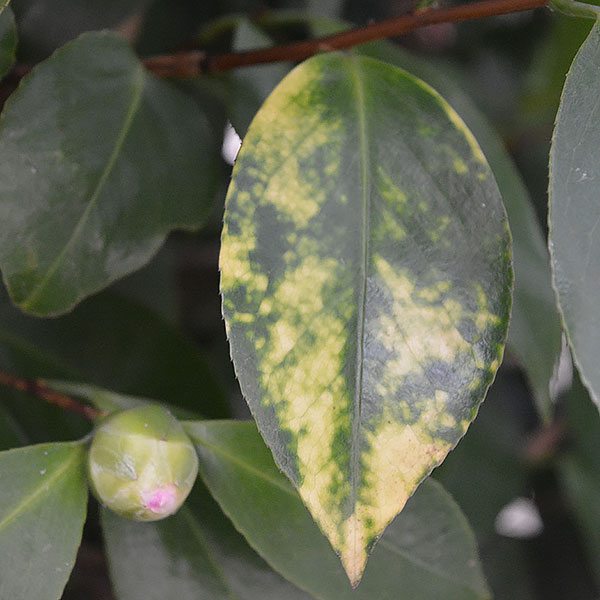
Camellia Diseases and Problems Nurseries Online
Camellia Diseases: Recognizing, Fighting & Preventing. Camellia japonica is a real eye-catcher in the garden, but just as susceptible to some pests. We show you how to recognize sick camellias. The camellia ( Camellia ) is a relatively robust potted plant. If you should ever let your leaves or flowers droop, or have other lesions, it is usually.

Diseased camellia plant with yellowing leaves, UK Stock Photo Alamy
Contents Camellias: animal pests We have listed which pests can make life miserable for your camellias, along with tips for effective control. Thrips (Thysanoptera) Also known as fringed aphids, thrips are tiny pests that are sometimes barely visible to the naked eye.

Camellia Freeze Damage to Leaves Walter Reeves The Gardener
Camellia Diseases and Problems Camellia Like all plants Camellias do have a few problems and are subject to a few diseases and insect attacks. In general they are however very easy care and hardy plants that require little more than pruning and fertilising if grown ninth right conditions.

Diseased Camellia Leaf YouTube
Caterpillars Two types are found in quantities which may require more than an occasional walk past squeezing the rolled up growth tips. They are the cabbage white and the light brown apple moth larvae. For a major outbreak requiring spraying, use a chewing insect spray, eg 'Carbryl'.

Landscape plants suffered worst beating in 25 years Garden Housecalls
What are camellia viruses? Virus symptoms on camellia plants have been described since the late 1940's. Initially referred to as 'Camellia leaf yellow mottle disease', the name was changed to Camellia yellow mottle virus in the 1970's when the symptoms were thought to be caused by a single virus. Recent DNA-based analytical methods, however, have revealed not one virus but several.
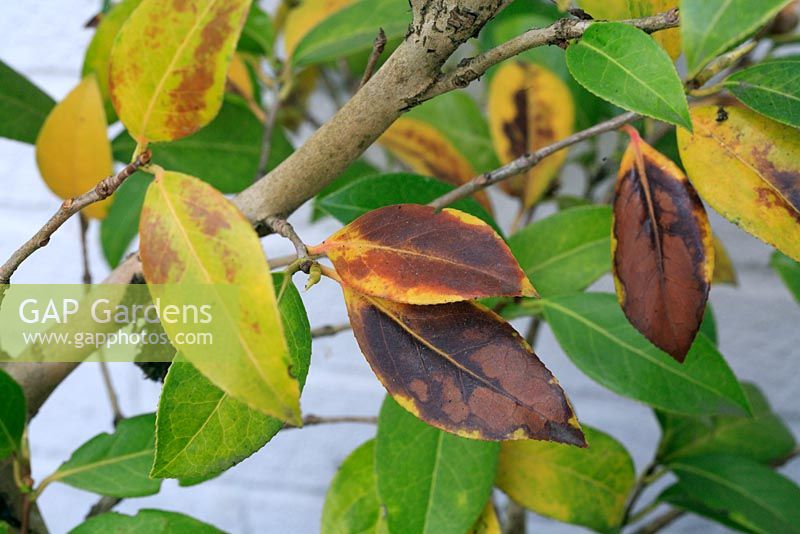
Chlorosis leaf damag... stock photo by Brian North, Image 0033975
They are grouped by the area of the shrub affected: roots, stems and branches, leaves and flowers. Camellia 'Phyl Doak' (reticulata × saluenensis) Quick facts Most common problems Non-flowering Leaf yellowing Frost damage Cushion scale Sooty mould Root diseases Jump to Problem gallery Roots Stems and branches Leaves Flowers Problem gallery

Phytophthora root and crown rots (Phytophthora spp. ) on camellia (Camellia spp. ) 1293005
Are there any plants that they won't make a meal out of? Black citrus ( Toxoptera citricida ), green peach ( Myzus persicae ), and melon aphids ( Aphis gossypii) are the most common species found on camellias, but you might see other species as well. Fortunately identifying the specific species doesn't matter, and you can treat them all the same.
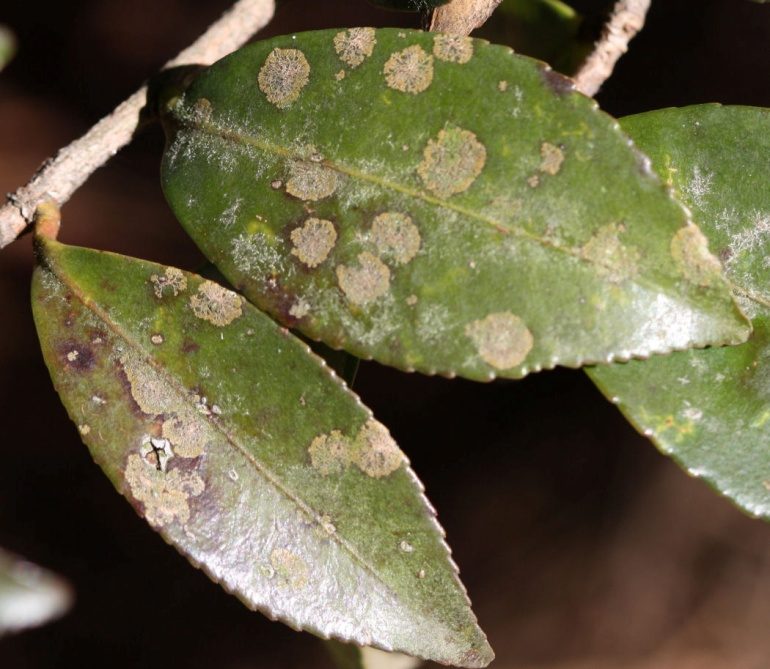
Algal Leaf Spot Home & Garden Information Center
Camellias are one of the most desirable and well-adapted plants for Southern gardens. Many of the common problems of sasanqua camellia ( Camellia sasanquaC. hiemalis, and C. vernalis) and the common Japanese camellia ( Camellia japonica) can be prevented or minimized by following the proper cultural recommendations.
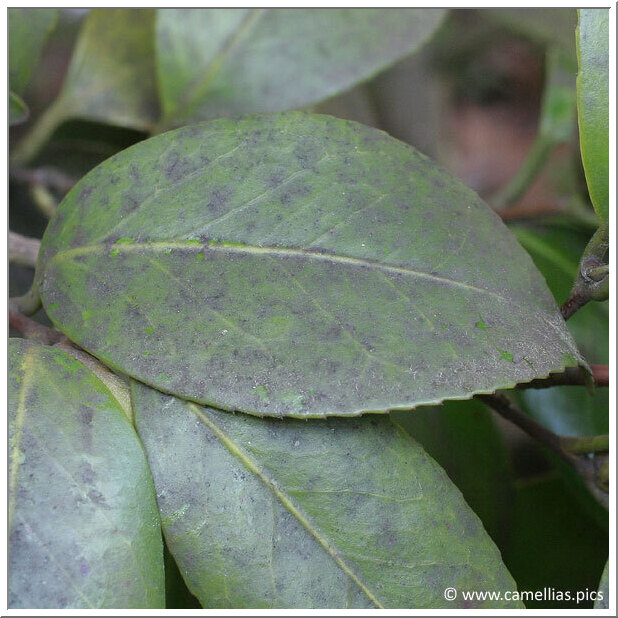
Camellia diseases Camellias.pics
Camellia flower blight is a fungal disease that affects camellia plants, particularly the flowers. The disease is caused by the fungus Ciborinia camelliae, which can infect the flowers and cause them to turn brown, mushy, and eventually fall off. What Causes Camellia Flower Blight? The fungus enters the plant through wounds, such as those.

Garden Pests and Diseases What's Wrong with my Camellia leaves???, 1 by Gitagal
Camellias are generally hardy plants, but occassionally problems may arise. Early detection is the key to to protecting your favorite specimens. Learn how to identify and treat problems at the onset to prevent damage to your plants and blooms. Aphids Camellia Canker and Dieback Camellia Petal Blight Camellia Root Rot Exobasidum Leafgall of Camellia

Camellia Disease Walter Reeves The Gardener
Dieback Dieback is a common disease and affects some camellias more than others. It is spread by splashing water, wind or unclean pruning shears. The spores enter through wounds on the plant and can cause limbs to "die" . If infected in the lower part of the plant, entire plant death could occur.
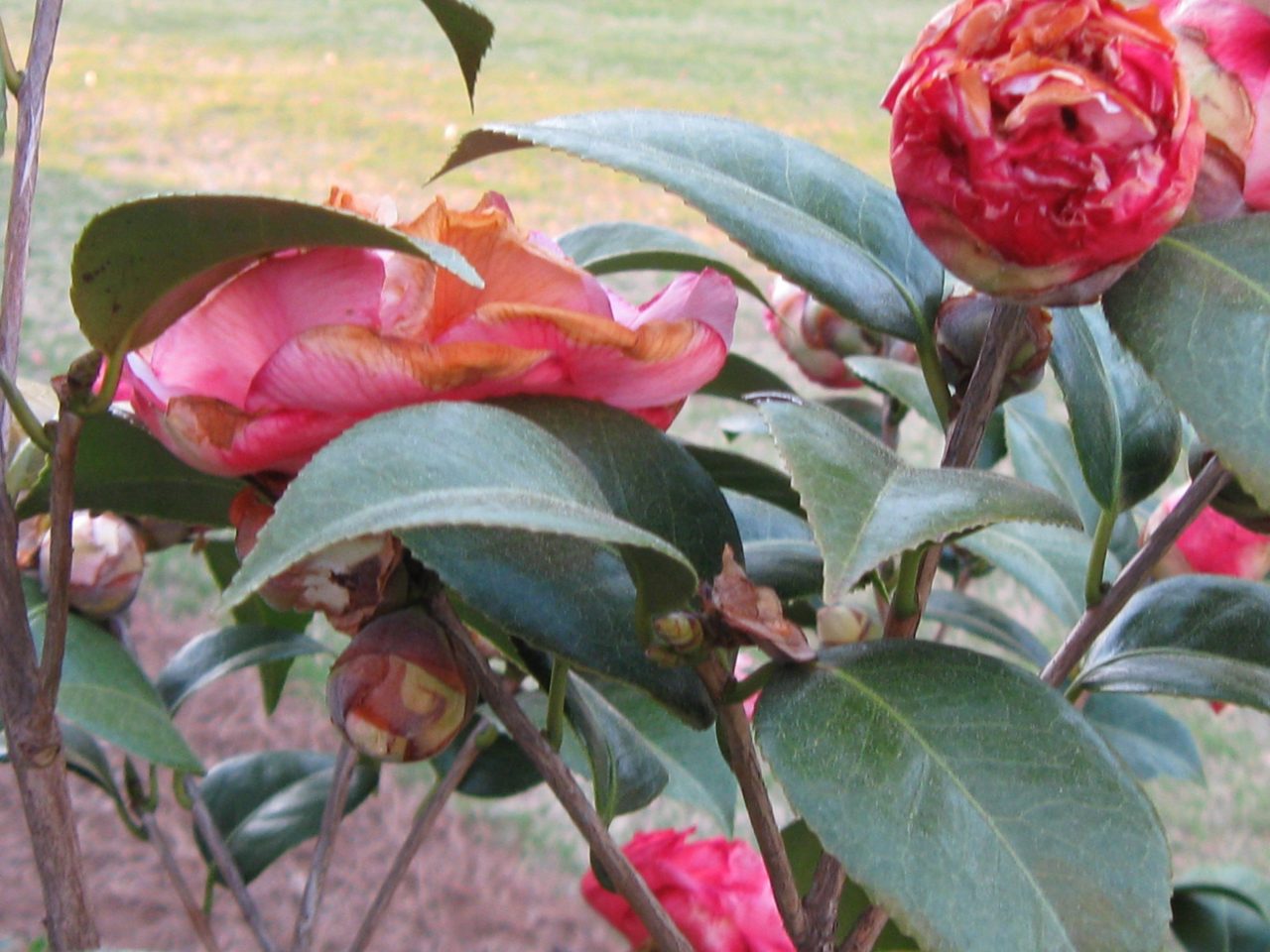
Camellia Freeze Damage vs Petal Blight Walter Reeves The Gardener
First observed in cinnamon trees, this fungus attacks the roots of the plant, initially causing a general appearance of poor health in the leaves and buds. This progresses to whole plant death. This disease can generally be determined as the cause of plant death by its signature red roots. A camellia's roots should be white in a healthy plant.

Camellia Petal Blight Garden And
Camellia dieback and canker is a serious fungal disease that causes the leaves to suddenly turn yellow and wilt. Cankers (sunken areas) develop on the bark and stems, eventually girdle the stem and cause areas above the canker to wilt and die. These symptoms usually occur during hot, dry weather.

Camellia Diseases & Insect Pests Home & Garden Information Center
Symptoms Control Biology What is camellia leaf blight? Camellia leaf blight is a disease that can be caused by two fungal pathogens: Monochaetia karstenii or Pestalotiopsis species. The development of the disease is favoured by wetness on the leaves and any factors that weaken or damage the foliage. Symptoms You may see the following symptoms:

What’s Wrong with My Camellia Leaves? Gardening in the Panhandle
Dark brown veins in the petals are a good indication that a camellia plant is suffering from petal blight. Pull off and dispose of infected flowers and treat with a foliar fungicide every one to two weeks. Canker disease can be identified by the sudden wilting of branches along with gray-colored blotches.